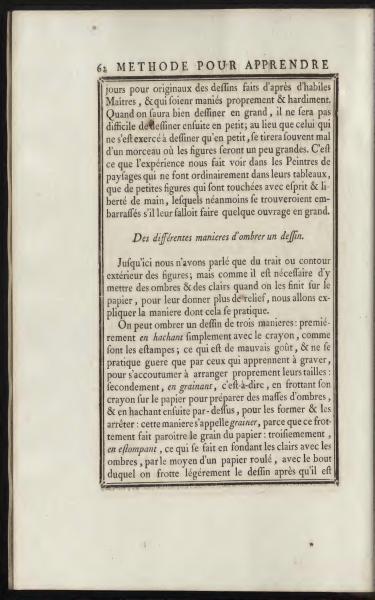METHOD FOR LEARNING
...days for original drawings done after skilled Masters, & handled properly and boldly. When one learns to draw well on a large scale, it will not be difficult to draw small afterward; whereas someone who only practices drawing small will often struggle with a piece where the figures are somewhat large. This is what experience shows us in landscape painters who usually only include small figures in their paintings, which are touched with spirit & freedom of hand. However, they would be troubled if they had to create something larger.
Different ways to shade a drawing
Up to now, we have only talked about the line or outer contour of figures; but since it's necessary to add shadows & highlights when finishing them on paper, to give them more relief, we will explain how this is done.
A drawing can be shaded in three ways: first by hashing simply with a pencil, as prints do; which is considered poor taste & is rarely practiced except by those learning to engrave, to get accustomed to arranging their cuts properly: secondly, by grainating, that is, by rubbing the pencil on the paper to prepare shadow masses, & then hashing over to form & fix them: this method is called grainating because this rubbing shows the paper's grain: thirdly, by stomping, which is done by blending lights with shadows, using rolled paper, with which one gently rubs the drawing afterward...
Translation Notes
Hashing: Refers to creating texture with short, parallel strokes. Grainating: Involves showing the paper's texture by rubbing. Stomping: Softening and blending areas for a smoother transition between light and dark.
The text discusses techniques for drawing and shading, emphasizing practicing drawing on larger scales for versatility. It describes three shading techniques: hashing, grainating, and stomping, each offering different textures and depth to the drawing. Understanding these methods can help artists create more dynamic and realistic artworks.
